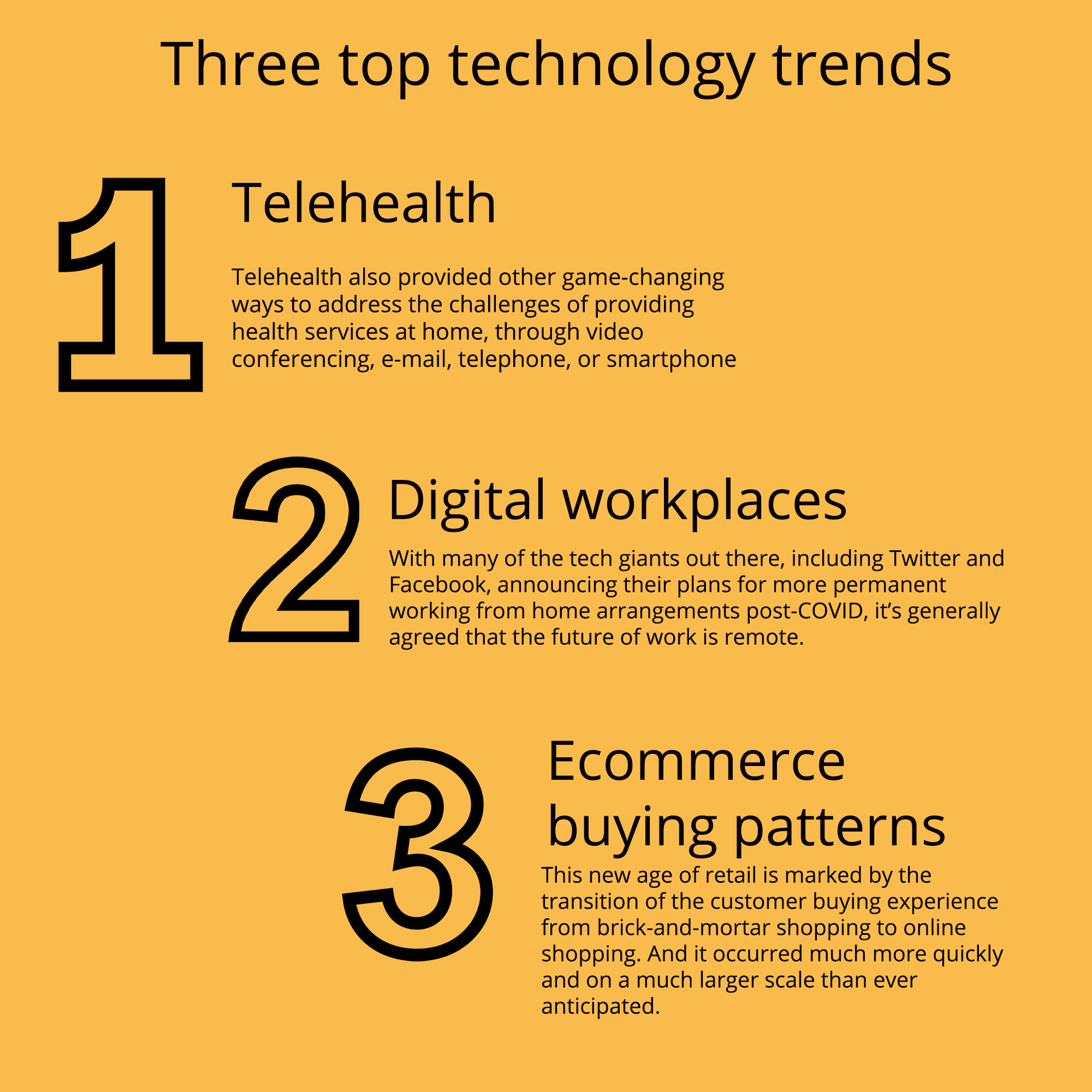Individuals and organisations alike have had to adapt in one way or another to our current pandemic environment, with new technology trends.
More than ever, we are relying on technology to help us navigate this new world.
However, what we think is a temporary fix may very well become part of our everyday life. With the infinite amount of changes happening around us, let’s look at 3 technology trends that are likely to remain.
Telehealth
George Braitberg AM, Executive Director of Strategy Quality and Improvement at Australia’s Royal Melbourne Hospital noted, at the beginning of the pandemic “only 20 percent of our outpatient visits were being done by telehealth, either by telephone or some form of telehealth platform.” During COVID-19, that number rose to 85 percent.
What is telehealth? Generally, telehealth is a term that covers the different ways that a patient and a doctor can use technology to communicate without having to be in the same room. During the COVID-19 pandemic, this became somewhat of a necessity. Physical separation was encouraged to help reduce the risk of community transmission of the virus.
Telehealth however, is not just a patient talking to a GP over the phone or using video technology. There are now specific apps and services being created in the technology world to aid or expand existing telehealth services.
For example, if we’re talking about mental health and wellbeing services, ReachOut is an Australian online service that is helping youth patients to recognise signs or symptoms of mental issues. ReachOut was established well before the pandemic came about and includes guidance for parents and schools. It also provides the opportunity to join a community to share experiences and being heard by professionals.
Medical wearables such as Lively Mobile, eSkin™ technology or even your smart watch have the technology to monitor basic human vital signs such as heart rhythm, respiratory rates, heart rate variability, temperature and more, with some of these technologies even transmitting this information to healthcare professionals.


Digital workplaces
The Families in Australia Survey: Towards COVID Normal found that among the employed survey respondents, 67% were sometimes or always working from home, compared to 42% pre-COVID.
“The Digital transformation” has been a buzzword over the last two years, because small and medium companies as well as large companies are moving operations to the cloud and adopting online productivity and services.
As work was forced to go remote, tools such as Microsoft Teams, Google Meet and Zoom become the heart of the companies.
Companies worldwide spent $34.6 billion on cloud services – the equivalent of two years’ worth of digital transformation in just two months. – Microsoft
Working from home is highly likely to become the new norm, now that it’s been proven it can be done – that you can work collaboratively as a team, despite being remote.
With these new technology trends and ways of working, businesses still need to ensure that their staff are safe, secure and healthy even while they are working from home. Work, Health and Safety polices need to be reviewed and updated to meet all requirements of this new life.


Ecommerce buying patterns
Growth predictions expect that the Australian ecommerce market will balloon from around $13.9 billion AUD in 2017 to $77.1 billion AUD by 2024.
Covid-19 has not been all doom and gloom for all Australian businesses. While the retail sector may have struggled in the traditional bricks and mortar model, their sales have boomed in the online world.
For retailers that didn’t have an online presence previously, they have had to quickly adapt and get online to satisfy customer demand. Thanks to forced lockdowns and social distancing, Aussies have turned to online shopping. Interestingly, it’s been revealed that almost four million households bought something online during the first week of lockdown as border closures limit our movement.
As a direct consequence of the boom in online shopping, electronic payments will also increase as consumers naturally move away from cash. PayPal, Apple Pay and Google Pay are just some of the big players that will benefit from the trend towards digital. Electronic payments would have to be one of the most favourable technology trends to come out in recent years.
Conn3cted are playing in both the ecommerce and digital payments space, with their ecommerce platform Little Big Shop, which enables small to medium Aussie businesses to get their business online quickly and affordably, as well as a product they developed called MicroGifts, which is a platform built around a digital Mastercard added to your smartphone’s wallet.



